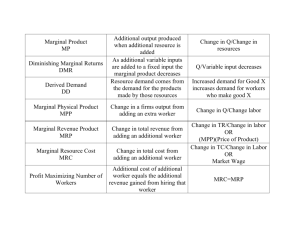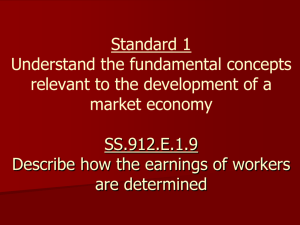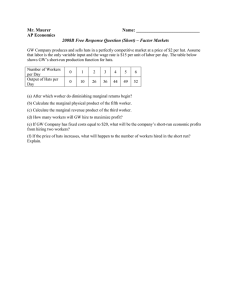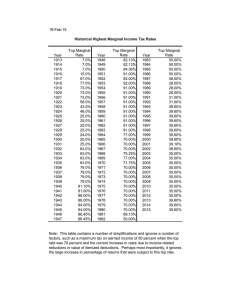Supply Across
advertisement
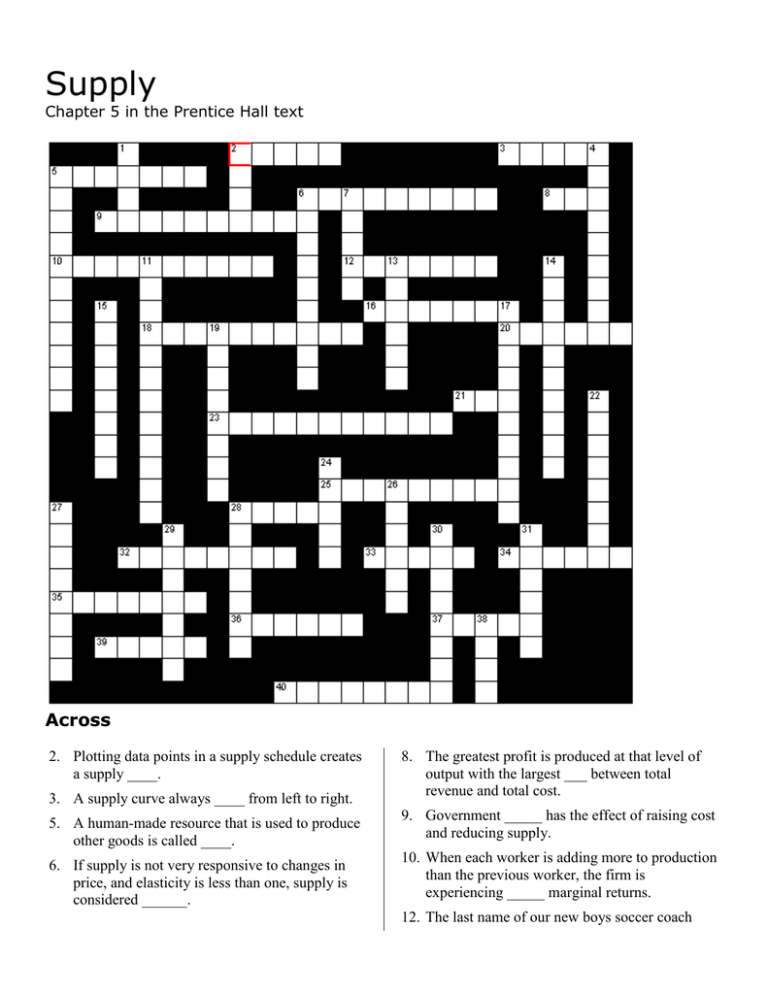
Supply Chapter 5 in the Prentice Hall text Across 2. Plotting data points in a supply schedule creates a supply ____. 3. A supply curve always ____ from left to right. 8. The greatest profit is produced at that level of output with the largest ___ between total revenue and total cost. 5. A human-made resource that is used to produce other goods is called ____. 9. Government _____ has the effect of raising cost and reducing supply. 6. If supply is not very responsive to changes in price, and elasticity is less than one, supply is considered ______. 10. When each worker is adding more to production than the previous worker, the firm is experiencing _____ marginal returns. 12. The last name of our new boys soccer coach 16. The change in output from hiring one more worker is the marginal _____ of labor. 32. Costs that rise or fall depending on the quantity produced are ____ costs. 18. A measure of the way suppliers respond to a price change is _____ of supply. 33. A cost that does not change regardless of how much of a good is produced is a ____ cost. 20. A tax on the production or sale of a good is called an _____ tax. 34. A fall in the cost of an input will cause an increase in ____ at all price levels. 21. In the long ___, firms are more flexible, so supply is more elastic. 35. Last name of our new baseball coach 23. When adding more workers increases total output, but at a decreasing rate, it is known as _____ marginal returns. 25. If total revenue is more than the ____ cost the firm should continue to produce, even if it is not making a profit. 28. In the ____ run, a firm cannot easily change its output level, so supply is inelastic. 36. Last name of our new boys basketball coach, a K.O. graduate! 37. The price of a good multiplied by the number of units sold is ____ revenue. 39. A rise or fall in the _____ of pizza will cause the quantity supplied to change, but not the supply. 40. The basic goal of the firm is to _____ profits. Down 1. If the seller expects the price of a good to ____ in the future, the seller will store the goods now in order to sell more in the future. 15. Economists use the terms _____ supplied to describe how much of a good is offered for sale at a specific price. 2. A rise in the ___ of an input will cause a fall in supply at all price levels because the good has become more expensive to produce. 17. Advances in ____ can lower production costs in many industries and therefore increase supply. 4. If more ___ enter a market to produce a certain good, the market supply of the good will rise. 5. Farm subsidies are particularly controversial, especially when farmers are paid to take land out of _____ to keep prices high. 6. A higher price for the product increases the ____ of new firms to enter the market to earn a profit for themselves. 19. A supply _____ shows the relationship between price and quantity supplied for a specific good. 22. The additional cost of producing one more unit is the ____ cost. 24. Fixed cost plus variable cost equals ____ cost. 26. ____ prices draw new firms into a market and add to the quantity supplied of the good. 27. Last name of the new K.O. principal 7. Profit is maximized at that level of output where marginal revenue is ____ to marginal cost. 28. A government payment that supports a business or market is a ____. 11. ______ of lower prices in the future will increase supply now and increase supply later. [This, by the way, is how the 'futures market' works!] 29. The change in output from hiring one more worker is the marginal ____ of labor. 13. According to the law of supply, the higher the price, the ____ the quantity produced. 30. When adding another worker actually decreases total output the firm is experiencing _____ marginal returns. 14. Adding a second worker would allow each worker to _____ in one or two tasks. 31. A fall in the cost of an input will cause an increase in _____ at all price levels. 38. The key factor in supply elasticity is ____.
